Pain & Fractures
- Arm Pain of Spinal Origin

Arm pain of spinal origin can be described as discomfort or pain felt anywhere in the arm including the wrist, elbow, or shoulder as a result of a pinched nerve (nerve compression) or irritated nerve in the spinal cord. The pain can occur as a dull constant pain or a sudden sharp pain that can develop suddenly or over time.
Know More - Back Pain

Back pain or backache is the pain felt in the back that may originate from damage to the muscles, nerves, bones, joints or other structures in the spine. Back pain is one of the most common medical problems experienced by most people at some time in their life. It can be acute, usually lasting from a few days to a few weeks, or chronic, lasting for more than three months.
Know More - Back Pain in Children
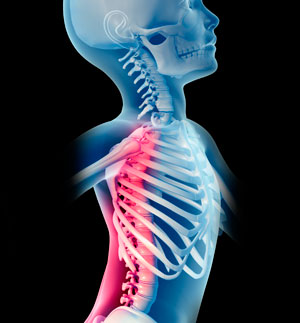
Back pain is uncommon in children and is usually associated with a serious underlying condition or an injury. Often, the cause of back pain is non-specific and is thought to be due to musculoskeletal strain, poor posture, heavy school bags that are not worn correctly or underlying mood problems.
Know More - Low Back Pain

Low back pain is often a common symptom of many disease conditions and the back pain may range from simple or dull pain to sudden and sharp pain. If the pain persists for a few days, it is acute pain whereas if it continues for more than 3 months, it is considered as chronic pain.
Know More - Mid-back Pain
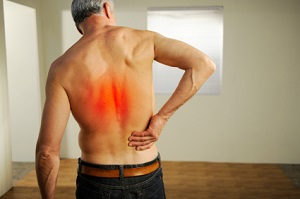
Mid-back pain is also called as thoracic pain or upper back pain. It occurs at the back of the chest and is much less common than lower back pain. It may occur due to poor posture, muscle strain, improper lifting and bending, physical inactivity, sports injury, a trauma in a car accident, cancer, or an autoimmune disease.
Know More - Neck Pain

Common neck pain may occur from muscle strain or tension from everyday activities including poor posture, prolonged use of a computer and sleeping in an uncomfortable position.
Know More - Spinal Fractures
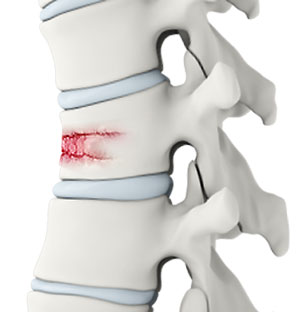
Vertebral compression fractures occur when the normal vertebral body of the spine is squeezed or compressed. The bone collapses when too much pressure is placed on the vertebrae, resulting in pain, limited mobility, loss of height, and spinal deformities. In severe compression fractures, the vertebral body is pushed into the spinal canal which will apply pressure on the spinal cord and nerves.
Know More - Spinal Compression Fractures

A compression fracture of the vertebra occurs when the bones of the spine (vertebrae) collapse. Most commonly, these fractures occur in the thoracic or the middle portion of the spine.
Know More - Vertebral Compression Fractures
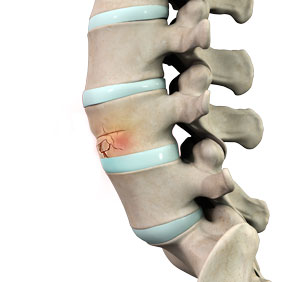
Back pain is an indication of stress fractures known as vertebral compression fractures. Vertebral compression fractures occur when the normal vertebral body of the spine is squeezed or compressed. The bone collapses when too much pressure is placed on the vertebrae, resulting in pain, limited mobility, loss of height and spinal deformity.
Know More - Osteoporotic Fractures
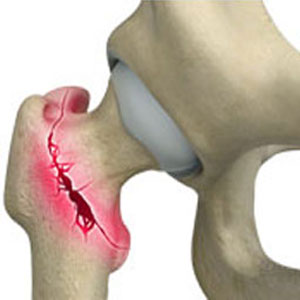
Osteoporosis is a bone disorder where your bones become fragile and weak causing them to break easily. The condition occurs when your body starts losing bone or does not make enough bone or both, due to calcium deficiency. Osteoporosis is common in the spine.
Know More
General
- Cervicogenic Headache
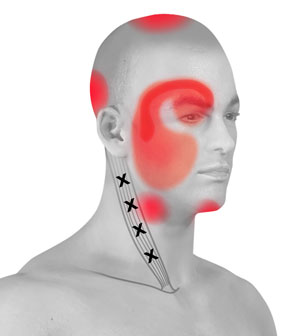
Cervicogenic headaches involve pain in one or both sides of your head that radiates from your neck to the front of the head.
Know More - Disc Herniation
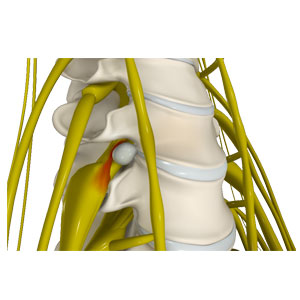
Disc herniation is a condition where the central nucleus pushes through the outer edge of the disc, causing a bulge that compresses the spinal nerves.
Know More - Degenerative Disc Disease
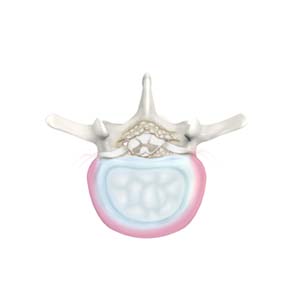
Degenerative disc disease (DDD) refers to the gradual deterioration of the intervertebral discs between the vertebrae. DDD is a misnomer as it is not actually a disease but a condition that affects the strength, resilience and structural integrity of the intervertebral discs due to advancing age, trauma, injury, repetitive movement, improper posture or poor body mechanics.
Know More - Degenerative Spinal Conditions
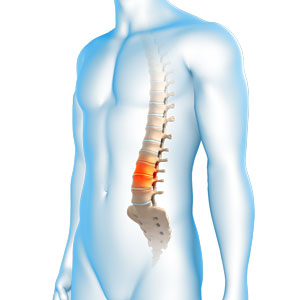
A degenerative condition is a continuous deterioration of a tissue or an organ in your body over time. Degenerative spinal conditions refer to a gradual loss of normal structure and/or function of the spine over time.
Know More - Spine Arthritis

Spine arthritis is a condition characterized by the inflammation, degeneration, or wearing out of cartilage in the joints of the spine. The cartilage in the spine includes the spinal discs between the vertebrae and the cartilage lining the facet joints in the back of the spine. Spinal arthritis can cause pain and stiffness in the back and neck.
Know More - Facet Joint Arthritis
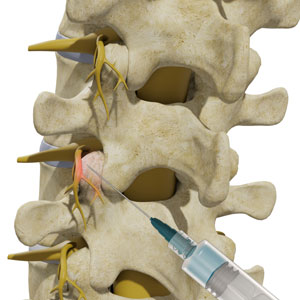
A minimally invasive treatment called facet injection offers symptomatic relief from back pain caused by inflammation of the facet joints; however, this is not a permanent solution for the condition. The objective of the treatment is to suppress pain so that normal activities can be resumed and you can perform physical therapy exercises.
Know More - Osteoporosis of the Spine

Osteoporosis is a bone disease characterized by a decrease in bone mass and density resulting in brittle, fragile bones that are more susceptible to fractures. The condition most commonly affects elderly women. Osteoporosis-related fractures are more common at the vertebral bodies of the spine.
Know More - Sciatica

The sciatic nerve is the longest nerve in your body. It begins in the lower back and extends through the buttocks down the back of each leg to the thighs and feet.
Know More - Scoliosis

Scoliosis is a condition characterized by the abnormal curvature of the spine that causes a deviation to one side. It causes a physical deformity, making the spine look like the letter “C” or “S” instead of the letter “I”. Scoliosis can affect either the mid or lower back. Scoliosis of the mid back is more common. Scoliosis can occur at any age.
Know More - Spine Injuries in Athletes

Spine injuries in athletes are defined as damage sustained by the spine as a result of physical trauma or overuse in people who are actively involved in sports.
Know More - Neck Strains & Sprains
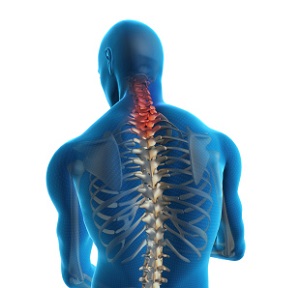
The neck is the most flexible part of the spine and supports the weight of the head. The unique anatomical structure of the cervical vertebrae allows the free movement of the head. The neck is also composed of muscles and ligaments. Any excessive stress on the ligaments and muscles may injure or damage them.
Know More - Spinal Injuries at Work
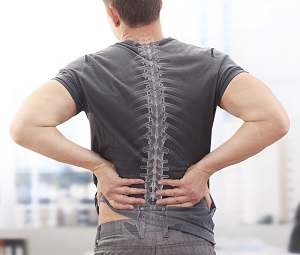
Injuries at the workplace are very common and may be debilitating. Global statistics report that around 260 million non-fatal injuries occur every year around the world of which 350,000 cases may suffer death. Workplace injuries often occur because of high-risk jobs, lack of or scarcity in safety devices, lack of training, and higher numbers of manual workers.
Know More - Spinal Instability
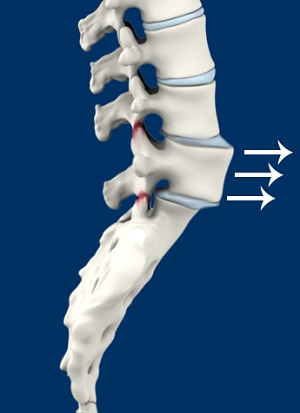
Spinal instability refers to the condition of failure of the spinal column to maintain its normal structure. Normally, the spine functions to protect and provide support to the body and its internal organs. An unstable spine is incapable of holding various spinal structures such as spinal muscles, ligaments, bones, and discs in place.
Know More - Poor Balance
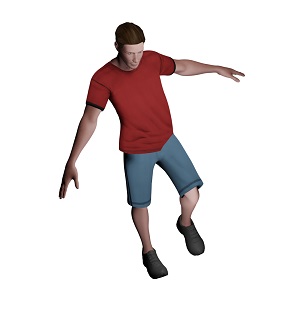
Poor balance can be defined as a sense of unsteadiness on your feet due to dizzy spells or lightheadedness, fainting, blackouts, or loss of consciousness.
Know More
Cervical
- Cervical Deformities
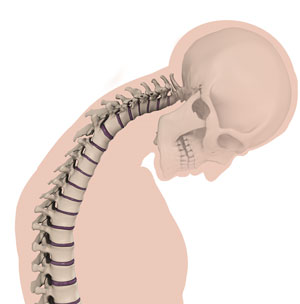
The spine is made up of 33 small bones called vertebrae and is known as the spinal column or vertebral column. It can be divided into 5 parts: cervical, thoracic, lumbar, sacral, and coccyx region. The cervical spine is comprised of the first 7 vertebrae, which supports the neck and the head.
Know More - Cervical Fracture
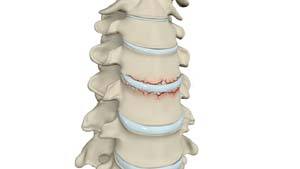
Cervical fractures are common in motor vehicle accidents, sports activities and falls. The second, sixth and seventh cervical vertebrae are frequently involved in fractures, which may injure the spinal cord.
Know More - Cervical Herniated Disc
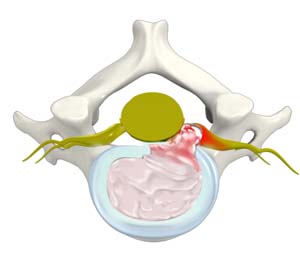
Herniation of a disc is an anomalous spine condition characterized by the bulging of the inner contents of the intervertebral disc due to cracks in its outer wall. A herniated disc is commonly seen in the cervical or neck region and is called cervical herniated disc(CHD). This condition is frequently reported in people between 30-40 years of age as well as elderly people.
Know More - Cervical Stenosis
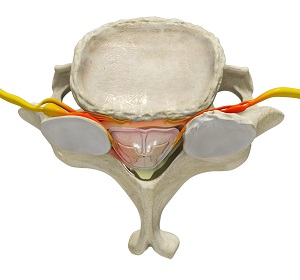
Cervical stenosis refers to the narrowing of the spinal canal that protects the spinal cord and its branching nerves.
Know More - Cervical Disc Protrusion
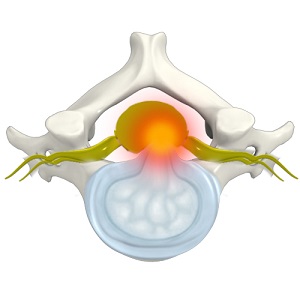
Cervical disc protrusion, commonly known as a disc bulge, occurs when the spinal discs and associated ligaments are intact, but may form an outpouching that presses on the spinal nerves.
Know More - Cervical Degenerative Disorder

Cervical degenerative disc disease (DDD) is a misnomer as it is not a disease but a condition that affects the strength, resiliency and structural integrity of the intervertebral discs due to increasing age, trauma, injury, repetitive movement, improper posture, or poor body mechanics.
Know More - Cervical Spondylosis
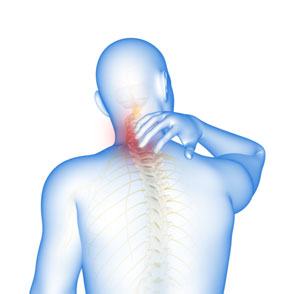
Cervical spondylosis, also called arthritis of the neck, is an age-related medical condition characterized by deterioration of spinal joints, vertebrae, discs, and ligaments in your neck.
Know More
Lumbar
- Herniated Disc (Lumbar)

Herniated disc is a condition in which the outer fibers (annulus) of the intervertebral disc are damaged causing the soft inner material of the nucleus pulposus to rupture out of its space. A herniated disc, common in the lower back (lumbar spine) occurs when there is a tear in the outer lining of the disc (annulus fibrosus).
Know More - Lumbar Herniated Disc
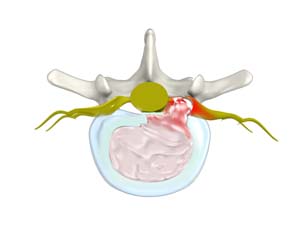
A herniated disc is a condition in which the outer fibers (annulus) of the intervertebral disc are damaged, causing the soft inner material of the nucleus pulposus to rupture out of its space. It is the most common cause of lower back pain and pain that radiates down the leg (radiculopathy).
Know More - Lumbar Stenosis
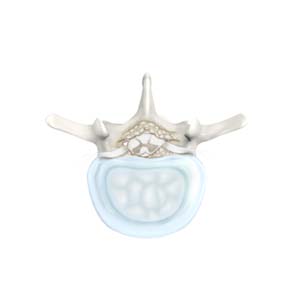
Lumbar stenosis is the compression of spinal nerves caused by the narrowing of the spinal canal. It is one of the common causes of lower back pain. Spinal stenosis can also affect the spine in the neck region.
Know More
Thoracic
- Thoracic Outlet Syndrome
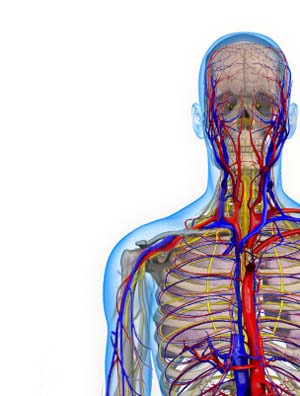
When this passageway becomes compressed, the condition is termed as thoracic outlet syndrome. It generally occurs within the age group of 20 to 60 years and is more common in females than in males.
Know More - Thoracic Disc Herniation
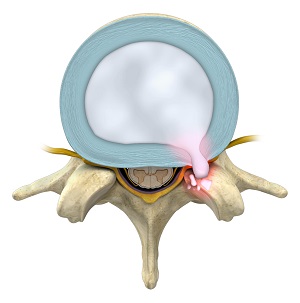
Thoracic herniation disc is a condition in which the outer fibers (annulus) of the intervertebral disc are damaged causing the soft inner material of the nucleus pulposus to rupture out of its space. This condition can be extremely serious if it occurs in the thoracic spine. Thoracic disc herniation is a relatively uncommon condition.
Know More - Compression of Thoracic Nerve
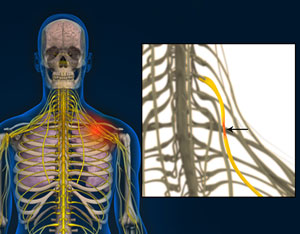
Nerves can undergo compression or become pinched by surrounding structures as they emerge from the spine, a condition called radiculopathy. Nerve compression mostly occurs in the neck or lower back regions which have more mobility, but it can sometimes involve the upper back or thoracic region.
Know More - Thoracic Pain

Thoracic pain is the pain and discomfort caused due to damage to the muscles, nerves, bones, and joints of the upper and middle part of the spine.
Know More




